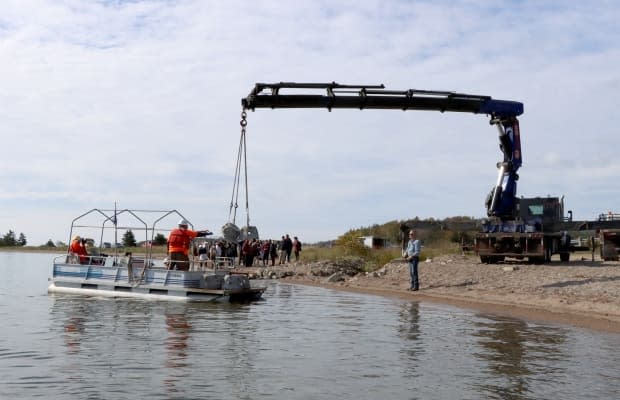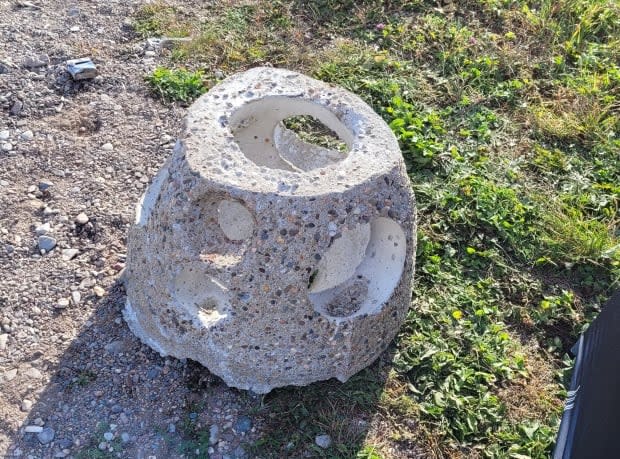Artificial reef balls to provide new home for Bras d'Or Lake lobster

Bras d'Or Lake in Cape Breton is already known for a variety of plants and animals, both on the shoreline and underwater, and a new project aims to see if some areas can be improved for local species.
The Unama'ki Institute of Natural Resources is trying out artificial reefs to try to make that happen.
"There's nothing wrong with the ecosystem here," said Jennifer Sylliboy, a researcher with the institute.
"However, our Mi'kmaw lobster fishers said that there [are] quite a few lobsters in this area, but if there was improved habitat then there would be way more lobsters."

According to Sylliboy, locals fish lobster for food, social and ceremonial purposes in the area.
On Oct.13, 104 concrete reef balls were placed off the coast of Castle Bay Beach in Eskasoni. Students from the nearby school were bused over to watch as a crane lifted the reef balls from the back of a truck onto a pontoon boat.
The project is collaboration of the institute, the Confederacy of Mainland Mi'kmaq, Nova Scotia Public Works, Thaumas Environmental Consultants and COJO Diving.
The reef balls weigh around 60 kilograms each. They're made from a pH-neutral concrete and will last around 500 years underwater.

They are made with holes so fish and lobster can hide and live in them. They were made by community members in Pictou Landing.
Sylliboy selected spots for the reef balls to be placed. Once dropped from the boat, divers went to the lake bottom to arrange the structures into a clock-like shape — one in the middle with 12 surrounding it.
"The ideal location for a reef ball would be a bottom that is not too sandy, not silty, kind of rocky but not too rocky, little to no vegetation, and is flat … and this area hits all those marks."
While they were on a boat observing the reef balls drop into the lake, Sylliboy and other staff pointed to a set of cliffs. They talked about playing on them as kids before erosion started to make them too steep.
The hope is the artificial reef will also slow down that erosion.
The institute will monitor the reef balls over the next three years to determine how productive they've been and to see if the area has improved.
"I'm hoping to see additional fish when we do this monitoring twice a year. I hope to see lots of different seaweeds and stuff growing, and hopefully I get to see some lobsters peeking out of the holes," said Sylliboy.
MORE TOP STORIES

 Yahoo Movies
Yahoo Movies 
